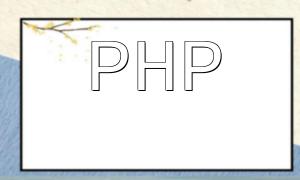Object-Oriented Programming (OOP) is a key aspect of modern PHP development. By using fundamental concepts like classes, objects, and methods, OOP helps developers write scalable, maintainable code.
In PHP, classes are at the heart of object-oriented programming. A class defines the structure and behavior of objects, containing both properties (used to store data) and methods (used to manipulate data).
Objects are instances of classes. Each object has its own properties and methods, and they are created based on a class template.
Creating a class is straightforward. Simply define the class name and specify its properties and methods. Here is an example of a simple PHP class:
class ClassName {public $property1;private $property2;public function method1() {// Method body}private function method2() {// Method body}}To create an object, you can use the `new` keyword:
$object = new ClassName();Once an object is created, you can access its properties and methods using the “->” operator:
$object->property;Similarly, to call a method:
$object->method();Object-Oriented Programming offers several advantages, including:
Although OOP has many benefits, it also comes with some drawbacks:
Object-Oriented Programming is a powerful methodology that enables developers to create more flexible and maintainable code. While it can introduce complexity, its advantages often outweigh the disadvantages, especially for large-scale applications and projects.
By mastering PHP object-oriented programming techniques, you can write cleaner, more extensible code, laying a solid foundation for the long-term maintenance and development of your projects.










